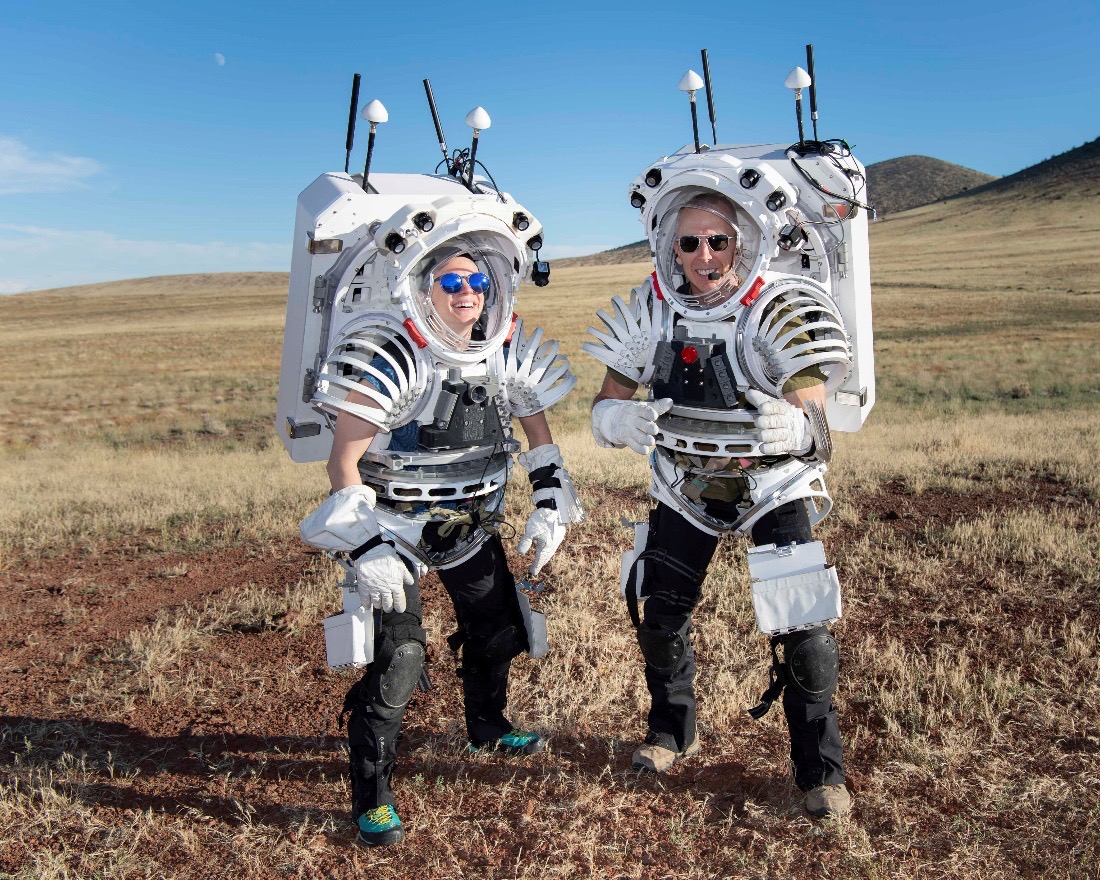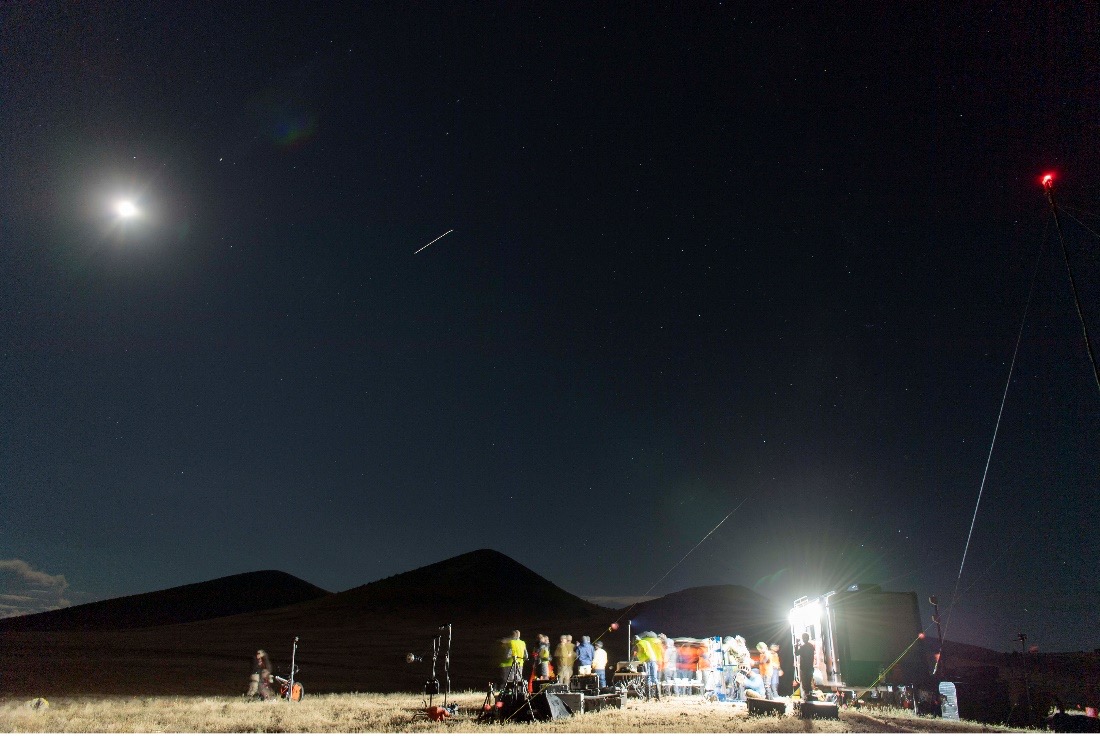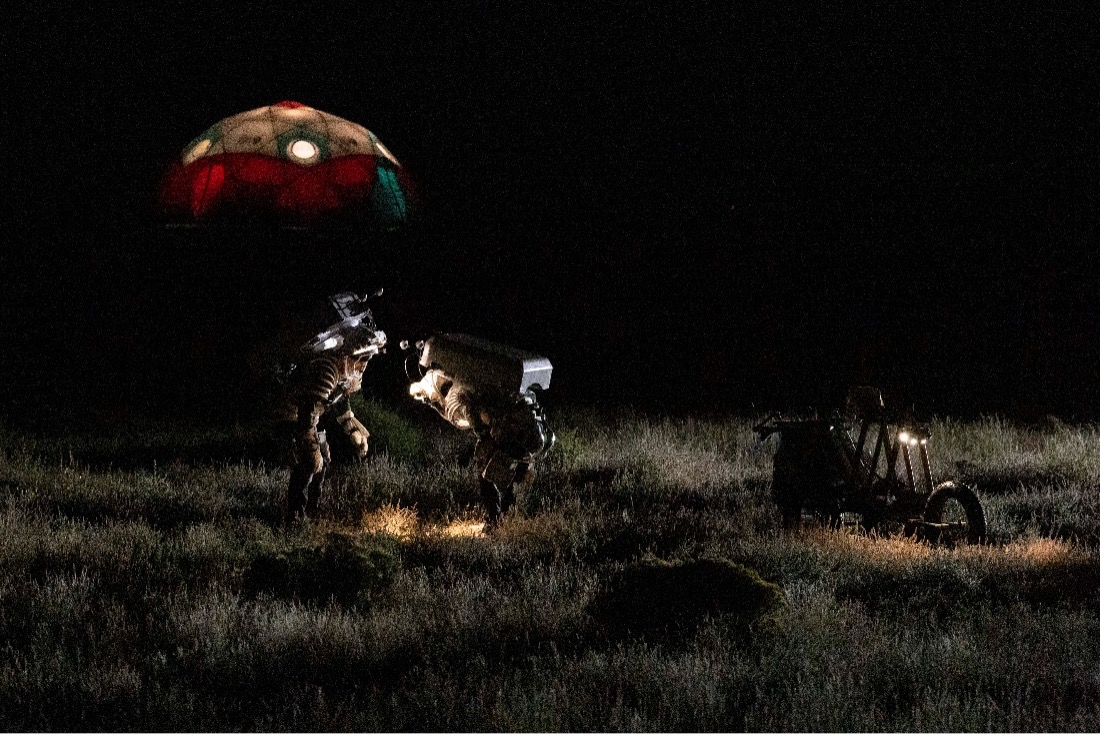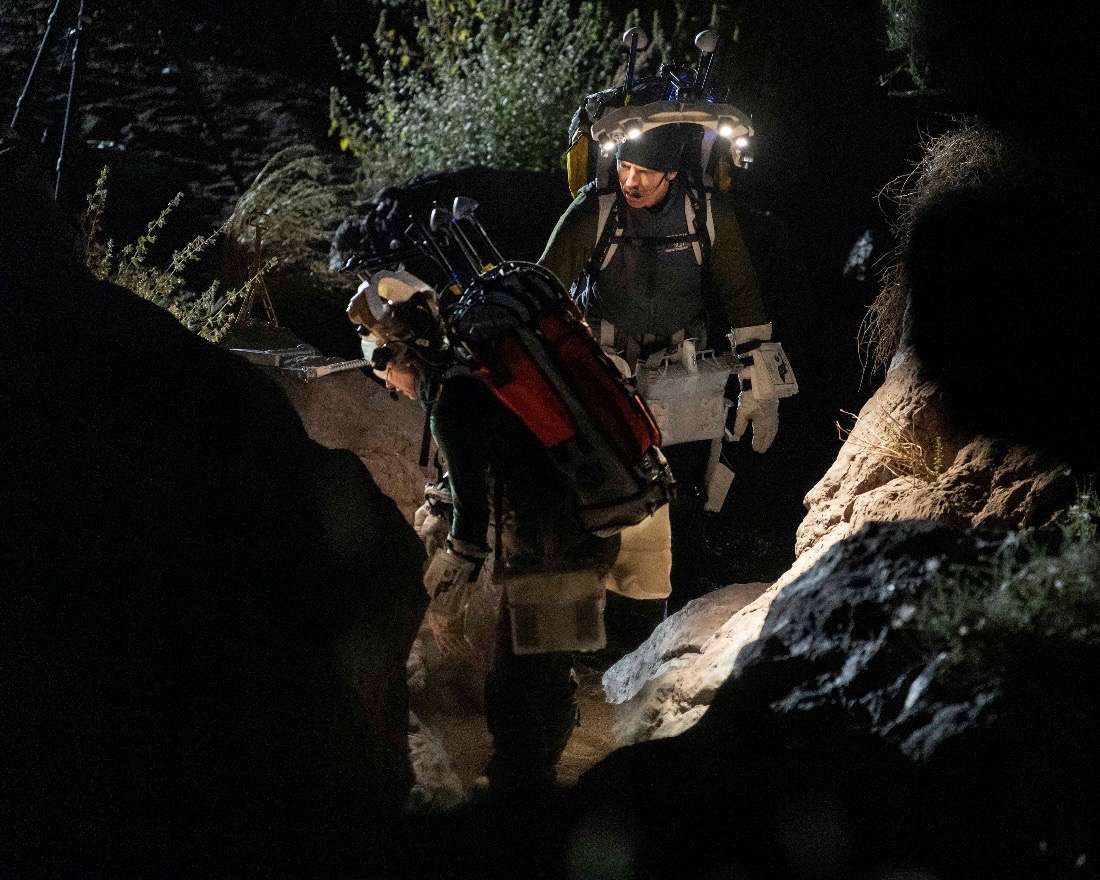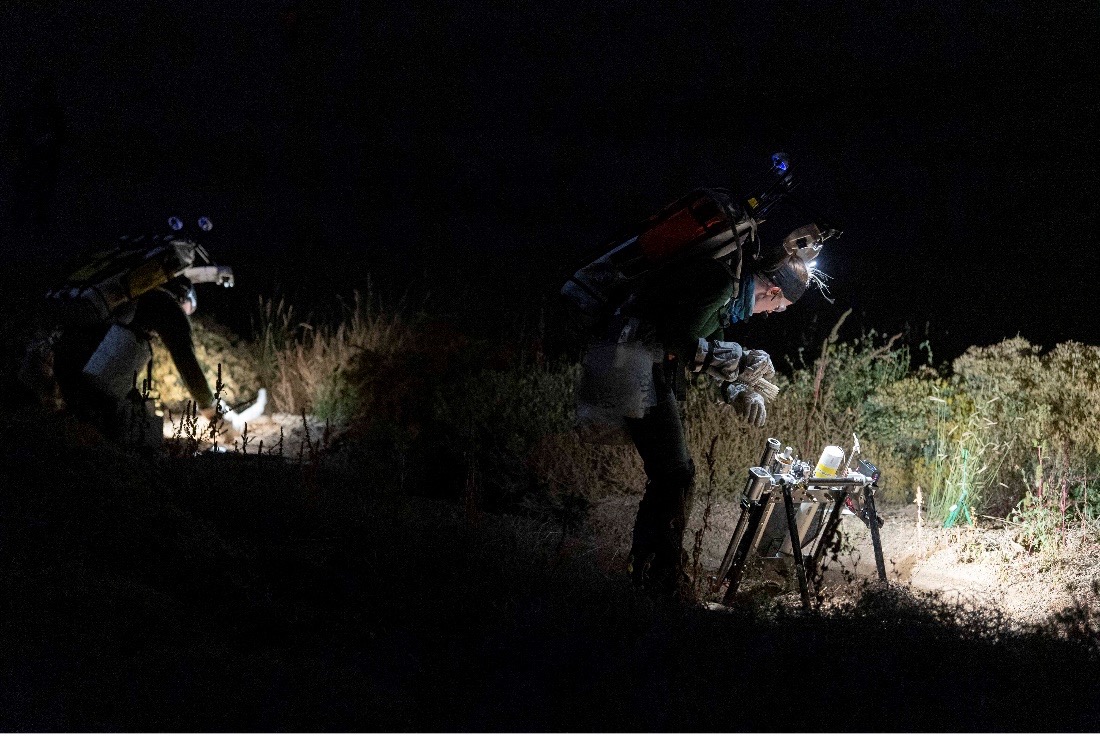The Joint Extravehicular Activity and Human Surface Mobility Test Team (JETT) Field Test 3 wrapped up on October 12. Four simulated moonwalks occurred over the course of four nights with lighting conditions representative of a lunar mission, and with a test run occurring the day before the moonwalks began.
Two NASA astronauts traversed the lunar-like environment of the San Francisco Volcanic Field located north of Flagstaff, Arizona. A science evaluation team and flight control team supported the astronauts from the Mission Control Center at NASA’s Johnson Space Center in Houston. The lessons learned and data collected during this simulated mission will help teams develop and adapt moonwalking plans and equipment for NASA’s Artemis III mission.
Test Run – October 4
During the test run, experts from flight operations and the United States Geological Survey (USGS) introduced the crew to the local topography and maps created for JETT3. On the moonwalks, the crew was expected to assess the outcrop of rocks, lay out markers, work with the science team in Houston to decide the best representative samples based on the objectives, and to successfully collect the samples with no contamination using specially designed tools. To help teams practice navigating the terrain with limited information during the mission, the maps contained details similar to what is provided by NASA’s Lunar Reconnaissance Orbiter and crew members gathered additional data as they traversed the land.
Moonwalk #1 – October 5
The team headed north to the base of S P Crater while wearing mockup spacesuits. The skeletal shape of the suits restricted mobility similar to wearing a pressurized spacesuit on the lunar surface. The crew also had to adapt to the drastic shadows created by a lighting cart system that mimicked the sun and unique lighting conditions of the lunar south pole.
Tools and hardware prototypes used throughout the run included a camera that was tested for wireless transfer. The prototype successfully transferred photos via Wi-Fi connection nearly instantaneously to the teams in Houston. Teams plan to use the same technology on the lunar surface so that astronauts can share photos with science and operations teams on Earth.
Moonwalk #2 – October 6
The second moonwalk trajectory delivered crew members inside a valley where the lighting cart simulated permanently shadowed regions of the Moon. These regions are expected to be inside craters that may possibly contain water in the form of ice.
The topography included areas of dark basaltic sand covering the ground as the crew ventured farther into the valley. This lunar-like gravel provided a realistic simulation of materials expected to be found on the lunar surface. At the final stop, astronaut Zena Cardman hammered a coring device into the ground to extract a sample.
Moonwalk #3 – October 8
The third moonwalk introduced a field backpack for the crew to wear instead of the spacesuits. These backpacks provided a simulation of added weight that a pressurized spacesuit provides, along with radios and cameras similar to an actual suit. Due to their lighter weight and increased mobility, the crew could venture farther and stay out longer on the simulated moonwalk.
An objective of this run, and throughout the entire mission, was to see how teams dealt with limited communications by simulating a scenario on the Moon in which crews venture out of range or into areas where the signal is blocked. At various times throughout the run, the communications team intentionally created broken communications between the astronauts and mission control, prompting them to adapt and act independently while still achieving mission outcomes.
Moonwalk #4 – October 9
The team finished with a full six-hour simulated moonwalk. Data gathered from JETT3 will help inform how long to make the Artemis moonwalks, how far the crew should travel, and what types of activities they should conduct.
Teams at USGS will analyze the samples collected during JETT3 and then send the samples to NASA’s Goddard Space Flight Center in Greenbelt, Maryland to compare findings. The mission runs concluded with several debriefs, and teams will work together over the coming months to share lessons learned and evolve the plans and hardware for Artemis moonwalks.
Learn more about how NASA’s analog missions are innovating for the benefit of humanity at:




























